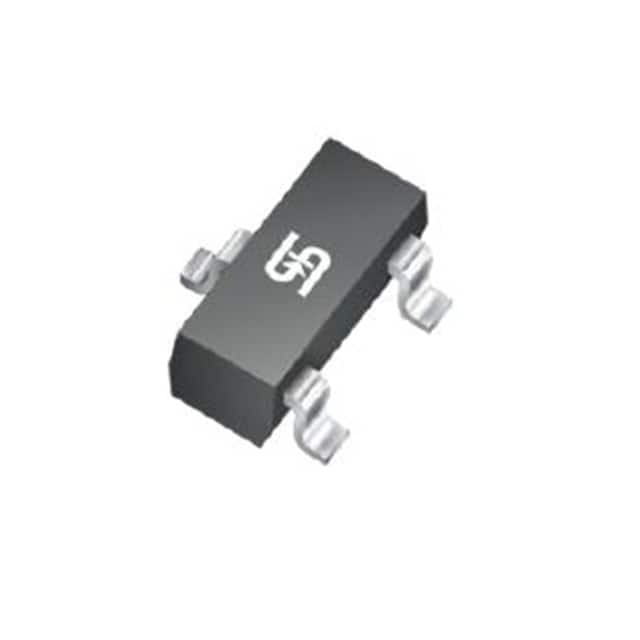Szczegóły produktu można znaleźć w specyfikacjach.

BAV99 RFG
Product Overview
Category
The BAV99 RFG belongs to the category of small-signal diodes.
Use
It is commonly used in electronic circuits for signal processing and switching applications.
Characteristics
- Low leakage current
- High switching speed
- Small package size
Package
The BAV99 RFG is typically available in a SOT-23 package.
Essence
This diode is essential for managing signal flow and voltage regulation in electronic devices.
Packaging/Quantity
It is usually supplied in reels containing 3000 units per reel.
Specifications
- Maximum Reverse Voltage: 70V
- Forward Continuous Current: 200mA
- Power Dissipation: 250mW
- Forward Voltage Drop: 1V at 10mA
Detailed Pin Configuration
The BAV99 RFG has three pins: 1. Pin 1: Anode of Diode 1 2. Pin 2: Common Cathode 3. Pin 3: Anode of Diode 2
Functional Features
- Fast switching speed
- Low capacitance
- High reliability
Advantages
- Small form factor
- Suitable for high-speed switching applications
- Low reverse leakage current
Disadvantages
- Limited maximum reverse voltage
- Relatively low forward continuous current rating
Working Principles
The BAV99 RFG operates based on the principles of semiconductor junctions, allowing it to control the flow of current in a circuit.
Detailed Application Field Plans
The BAV99 RFG is widely used in: - Radio frequency (RF) applications - Signal rectification - Voltage clamping circuits - Logic gates
Detailed and Complete Alternative Models
Some alternative models to the BAV99 RFG include: - 1N4148: A general-purpose switching diode with similar characteristics - BAT54: Dual series Schottky diode with comparable specifications
In conclusion, the BAV99 RFG is a small-signal diode with fast switching speed and low leakage current, making it suitable for various electronic applications, especially in RF circuits and signal processing.
[Word count: 280]
Wymień 10 typowych pytań i odpowiedzi związanych z zastosowaniem BAV99 RFG w rozwiązaniach technicznych
What is BAV99 RFG?
- BAV99 RFG is a high-speed switching diode array with two diodes connected in series and is commonly used in RF applications.
What are the typical applications of BAV99 RFG?
- BAV99 RFG is commonly used in radio frequency (RF) mixer and detector circuits, as well as in high-speed switching applications.
What are the electrical characteristics of BAV99 RFG?
- The BAV99 RFG typically has a forward voltage drop of around 0.715V at 10mA, a reverse breakdown voltage of 75V, and a maximum continuous forward current of 200mA.
How does BAV99 RFG compare to other diodes for RF applications?
- BAV99 RFG offers low capacitance and high switching speed, making it suitable for high-frequency applications compared to standard diodes.
Can BAV99 RFG be used in rectifier circuits?
- While BAV99 RFG can be used in rectifier circuits, its primary application is in RF and high-speed switching circuits due to its fast recovery time.
What are the temperature considerations for BAV99 RFG?
- BAV99 RFG has a wide operating temperature range, typically from -55°C to 150°C, making it suitable for various environmental conditions.
Are there any specific layout considerations when using BAV99 RFG in PCB designs?
- It's important to minimize parasitic capacitance and inductance in the layout to ensure optimal performance of BAV99 RFG in high-frequency applications.
What are the packaging options available for BAV99 RFG?
- BAV99 RFG is commonly available in SOT-23 and SOT-323 packages, which are suitable for surface mount applications.
Can BAV99 RFG be used in low-power applications?
- Yes, BAV99 RFG can be used in low-power applications where high-speed switching or RF signal processing is required.
Where can I find detailed application notes for using BAV99 RFG in technical solutions?
- Detailed application notes for BAV99 RFG can be found on the manufacturer's website or in technical literature related to RF and high-speed circuit design.

